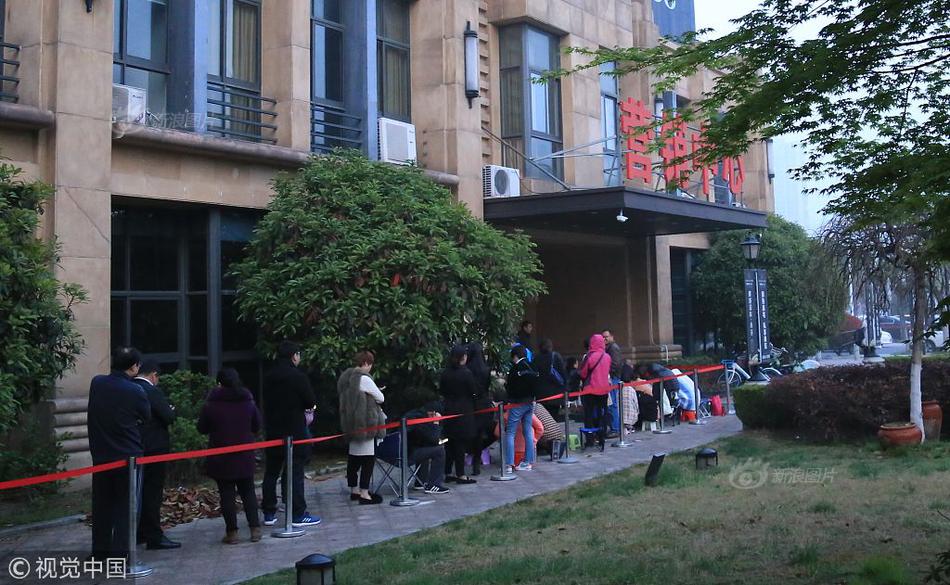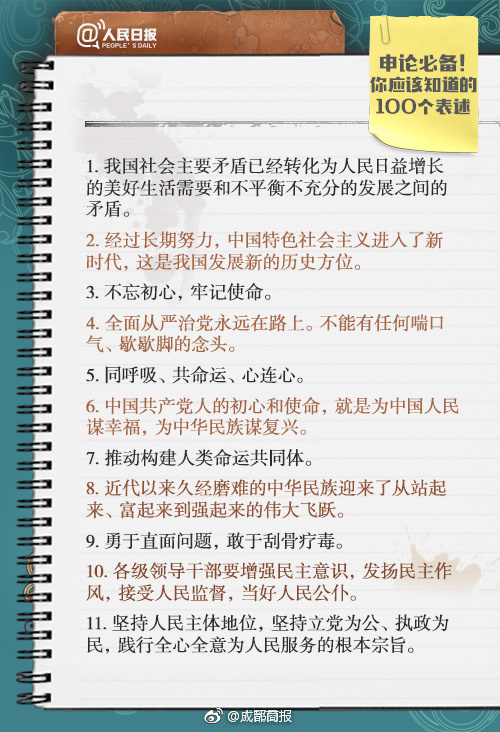
. The essence is different. The database system is a software system. The database management system is essentially software, and the database application system is a computer.Application system Database system is an ideal data processing system developed to meet the needs of data processing.
Database, a warehouse that holds data. Database system is a general term for the combination of database, database management system, hardware and operators.
First of all, the database system (baiDBS) includes the database (DB) and the database management system (DBMS). The database management system includes the database, and the database includes data. A database is a warehouse used to store data. Database management system is a system that manipulates and manages databases.
Database System DBS (Data Base System) includes database DB (Data Base) and database management system DBMS (Database Management System).

1. Database management system is a large-scale software for manipulating and managing databases, which is used to establish, use and maintain databases, abbreviated as DBMS. Introduction to the functions of the database management system: 1.It is mainly to carry out unified management and control of the database to ensure the security and integrity of the database.
2. Database Management System Database Management System (DBMS) is the core software system for managing databases. It is based on the operating system, and all operations of the database are unified under the management of DBMS. It is carried out under reason and control.
3. Database Management System (DBMS) is a software system used to manage and organize the storage, retrieval, modification and deletion of data. It provides an access and operation interface to the database, so that users and applications can conveniently interact with the database.
4. Database management system is a large-scale software that manipulates and manages databases, which is used to establish, use and maintain databases, abbreviated as dbms. It manages and controls the database in a unified way to ensure the security and integrity of the database.
5. Database management system is a large-scale software to manipulate and manage databases, which is used to establish, use and maintain databases.
1. Database management system is a large-scale software that manipulates and manages databases for establishing, using and maintaining databases, abbreviated as DBMS .Introduction to the functions of the database management system: 1. It is mainly to carry out unified management and control of the database to ensure the security and integrity of the database.
2. A database is "a warehouse that organizes, stores and manages data according to the data structure". It is a collection of a large amount of data stored in the computer for a long time, organized, shareable and unified management.
3. Database Management System is a large-scale software that manipulates and manages databases for establishing, using and maintaining databases, abbreviated as DBMS. It manages and controls the database in a unified way to ensure the security and integrity of the database.
4. Data is a physical symbol that arranges and combines load or recorded information according to certain rules.It can be numbers, text, images, or computer code. Database is a warehouse that organizes, stores and manages data according to the data structure.
5. rnrn database management system: rnrn database management system is a large-scale software for manipulating and managing databases, which is used to establish, use and maintain databases, abbreviated as dbms.
The relationship between the database, the database system and the database management system can be summarized as: the three are progressive and inseparable.
Their relationship is that the database system consists of a database and a database management system.
DataBase: a collection of structured relevant data stored on a computer storage device. Database Management System (DBMS): Specially manage data, provide unified mechanisms such as security and integrity, and manage the establishment, use and maintenance of databases.
1,. The essence is different. The database system is a software system, the database management system is essentially software, and the database application system is a computer application system. The database system is an ideal data processing system developed to meet the needs of data processing.
2. Database refers to a data collection that is stored together in a certain way, can be shared by multiple users, has the characteristics of as little redundancy as possible, and is independent of the application.
3. The information in the database is organized, stored, managed and developed through the database management system. The database is a warehouse that organizes, stores and manages data according to the data structure.
4. DatabaseSystem (DBS) is a system composed of a database and its management software. The database system generally consists of 5 parts: hardware system, database collection, database management system, application system and personnel.
5. It is not the database management system, that is, dbms. It is used forCome to manage and manipulate the large-scale software of the database. To put it bluntly, the database is a warehouse that stores and manages data. The two are completely different.
6. Database management system is a large-scale software that manipulates and manages databases, which is used to establish, use and maintain databases, or DBMS for short. Common database management systems include: Oracle, Sybase, Informix, Microsoft SQL Server, etc.
1, accessS is a kind of relational database. The relational database consists of a series of tables, and the table is composed of a series of rows and columns. Each row is a record, each column is a field, and each field has a field name, and the field name cannot be repeated in a table. Figure 1 is an example of a "product" table.
2. The database management system is a tool for organizing and managing data, and Access is the database management system.
3. Difference: The physical structure and logical structure of each database are different, which leads to great differences in the management methods of various databases; each database has extended the sql standard language stipulated by sql2 and sql3 to form its own development language, that is, dialect. The difference between many dialects is quite big.
4. Aess is a relational database management system. Its main features are as follows: (1) The objects managed by a single Aess storage method include tables, queries, forms, reports, pages, macros and modules. The above objects are all stored in database files with the suffix (.mdb), which is convenient for users Operation and management.
5. Access is a traditional desktop relational database. The database is a structured data collection. Unlike ordinary data files, it is a string of text or digital streams. The data in the database can be text, images, sounds, etc.
6. Generally speaking, the desktop database is used for small, stand-alone applications. It does not require a network and a server, which is relatively convenient to implement, but it only provides data access function.
HS code filtering for restricted items-APP, download it now, new users will receive a novice gift pack.
. The essence is different. The database system is a software system. The database management system is essentially software, and the database application system is a computer.Application system Database system is an ideal data processing system developed to meet the needs of data processing.
Database, a warehouse that holds data. Database system is a general term for the combination of database, database management system, hardware and operators.
First of all, the database system (baiDBS) includes the database (DB) and the database management system (DBMS). The database management system includes the database, and the database includes data. A database is a warehouse used to store data. Database management system is a system that manipulates and manages databases.
Database System DBS (Data Base System) includes database DB (Data Base) and database management system DBMS (Database Management System).

1. Database management system is a large-scale software for manipulating and managing databases, which is used to establish, use and maintain databases, abbreviated as DBMS. Introduction to the functions of the database management system: 1.It is mainly to carry out unified management and control of the database to ensure the security and integrity of the database.
2. Database Management System Database Management System (DBMS) is the core software system for managing databases. It is based on the operating system, and all operations of the database are unified under the management of DBMS. It is carried out under reason and control.
3. Database Management System (DBMS) is a software system used to manage and organize the storage, retrieval, modification and deletion of data. It provides an access and operation interface to the database, so that users and applications can conveniently interact with the database.
4. Database management system is a large-scale software that manipulates and manages databases, which is used to establish, use and maintain databases, abbreviated as dbms. It manages and controls the database in a unified way to ensure the security and integrity of the database.
5. Database management system is a large-scale software to manipulate and manage databases, which is used to establish, use and maintain databases.
1. Database management system is a large-scale software that manipulates and manages databases for establishing, using and maintaining databases, abbreviated as DBMS .Introduction to the functions of the database management system: 1. It is mainly to carry out unified management and control of the database to ensure the security and integrity of the database.
2. A database is "a warehouse that organizes, stores and manages data according to the data structure". It is a collection of a large amount of data stored in the computer for a long time, organized, shareable and unified management.
3. Database Management System is a large-scale software that manipulates and manages databases for establishing, using and maintaining databases, abbreviated as DBMS. It manages and controls the database in a unified way to ensure the security and integrity of the database.
4. Data is a physical symbol that arranges and combines load or recorded information according to certain rules.It can be numbers, text, images, or computer code. Database is a warehouse that organizes, stores and manages data according to the data structure.
5. rnrn database management system: rnrn database management system is a large-scale software for manipulating and managing databases, which is used to establish, use and maintain databases, abbreviated as dbms.
The relationship between the database, the database system and the database management system can be summarized as: the three are progressive and inseparable.
Their relationship is that the database system consists of a database and a database management system.
DataBase: a collection of structured relevant data stored on a computer storage device. Database Management System (DBMS): Specially manage data, provide unified mechanisms such as security and integrity, and manage the establishment, use and maintenance of databases.
1,. The essence is different. The database system is a software system, the database management system is essentially software, and the database application system is a computer application system. The database system is an ideal data processing system developed to meet the needs of data processing.
2. Database refers to a data collection that is stored together in a certain way, can be shared by multiple users, has the characteristics of as little redundancy as possible, and is independent of the application.
3. The information in the database is organized, stored, managed and developed through the database management system. The database is a warehouse that organizes, stores and manages data according to the data structure.
4. DatabaseSystem (DBS) is a system composed of a database and its management software. The database system generally consists of 5 parts: hardware system, database collection, database management system, application system and personnel.
5. It is not the database management system, that is, dbms. It is used forCome to manage and manipulate the large-scale software of the database. To put it bluntly, the database is a warehouse that stores and manages data. The two are completely different.
6. Database management system is a large-scale software that manipulates and manages databases, which is used to establish, use and maintain databases, or DBMS for short. Common database management systems include: Oracle, Sybase, Informix, Microsoft SQL Server, etc.
1, accessS is a kind of relational database. The relational database consists of a series of tables, and the table is composed of a series of rows and columns. Each row is a record, each column is a field, and each field has a field name, and the field name cannot be repeated in a table. Figure 1 is an example of a "product" table.
2. The database management system is a tool for organizing and managing data, and Access is the database management system.
3. Difference: The physical structure and logical structure of each database are different, which leads to great differences in the management methods of various databases; each database has extended the sql standard language stipulated by sql2 and sql3 to form its own development language, that is, dialect. The difference between many dialects is quite big.
4. Aess is a relational database management system. Its main features are as follows: (1) The objects managed by a single Aess storage method include tables, queries, forms, reports, pages, macros and modules. The above objects are all stored in database files with the suffix (.mdb), which is convenient for users Operation and management.
5. Access is a traditional desktop relational database. The database is a structured data collection. Unlike ordinary data files, it is a string of text or digital streams. The data in the database can be text, images, sounds, etc.
6. Generally speaking, the desktop database is used for small, stand-alone applications. It does not require a network and a server, which is relatively convenient to implement, but it only provides data access function.
How to verify supplier credibility with data
author: 2024-12-24 01:34How to simplify export documentation
author: 2024-12-24 00:41How to identify correct HS codes
author: 2024-12-24 00:31Pharmaceutical compliance monitoring
author: 2024-12-23 23:40China trade data analysis tools
author: 2024-12-23 23:30HS code-driven cross-border e-commerce
author: 2024-12-24 00:54How to manage complex customs laws
author: 2024-12-24 00:54Predictive container utilization analytics
author: 2024-12-24 00:51Trade data for consumer electronics
author: 2024-12-24 00:22Organic chemicals (HS code ) patterns
author: 2024-12-23 23:54 Identifying duty exemptions via HS code
Identifying duty exemptions via HS code
646.29MB
Check Trade data-driven transport mode selection
Trade data-driven transport mode selection
936.16MB
Check Trade finance structuring by HS code
Trade finance structuring by HS code
834.75MB
Check Customs procedure optimization
Customs procedure optimization
464.95MB
Check Optimizing FTAs with HS code data
Optimizing FTAs with HS code data
477.83MB
Check Dynamic import export performance metrics
Dynamic import export performance metrics
876.51MB
Check Global trade barrier analysis
Global trade barrier analysis
551.45MB
Check HS code-based commodity chain analysis
HS code-based commodity chain analysis
626.16MB
Check Trade data for import tariff planning
Trade data for import tariff planning
538.12MB
Check Data-driven trade partner selection
Data-driven trade partner selection
331.43MB
Check customs data reports
customs data reports
466.18MB
Check Understanding HS codes in trade data
Understanding HS codes in trade data
649.72MB
Check How to use analytics for HS classification
How to use analytics for HS classification
173.27MB
Check HS code integration with supply chain
HS code integration with supply chain
116.87MB
Check HS code-based anti-dumping analysis
HS code-based anti-dumping analysis
311.93MB
Check Comparative HS code duty analysis
Comparative HS code duty analysis
243.29MB
Check HS code-driven tariff equalization
HS code-driven tariff equalization
137.46MB
Check How to standardize trade documentation
How to standardize trade documentation
314.92MB
Check Global trade data storytelling
Global trade data storytelling
311.22MB
Check HS code-driven risk management frameworks
HS code-driven risk management frameworks
528.21MB
Check Trade data analysis for small businesses
Trade data analysis for small businesses
528.98MB
Check Trade data for non-profit organizations
Trade data for non-profit organizations
797.77MB
Check How to interpret bill of lading data
How to interpret bill of lading data
873.14MB
Check Real-time supply chain event updates
Real-time supply chain event updates
213.16MB
Check Aggregated global trade insights dashboard
Aggregated global trade insights dashboard
423.31MB
Check Real-time supplier performance scoring
Real-time supplier performance scoring
982.21MB
Check Real-time import quota alerts
Real-time import quota alerts
528.26MB
Check HS code-based vendor qualification
HS code-based vendor qualification
569.43MB
Check Supply contracts referencing HS codes
Supply contracts referencing HS codes
155.18MB
Check HS code validation for diverse industries
HS code validation for diverse industries
658.69MB
Check HS code filtering for import risk
HS code filtering for import risk
434.75MB
Check export data analytics
export data analytics
212.64MB
Check Global trade forecasting tools
Global trade forecasting tools
433.94MB
Check How to reduce stockouts via trade data
How to reduce stockouts via trade data
492.16MB
Check How to minimize supply chain disruptions
How to minimize supply chain disruptions
492.79MB
Check Country tariff schedules by HS code
Country tariff schedules by HS code
486.82MB
Check
Scan to install
HS code filtering for restricted items to discover more
Netizen comments More
2792 Cross-verifying suppliers by HS code
2024-12-24 01:10 recommend
1405 Cost-benefit analysis of export markets
2024-12-24 01:03 recommend
465 Comparing duty rates across markets
2024-12-24 00:24 recommend
2746 How to align sourcing strategy with trade data
2024-12-24 00:09 recommend
1526 supply chain intelligence
2024-12-23 23:18 recommend